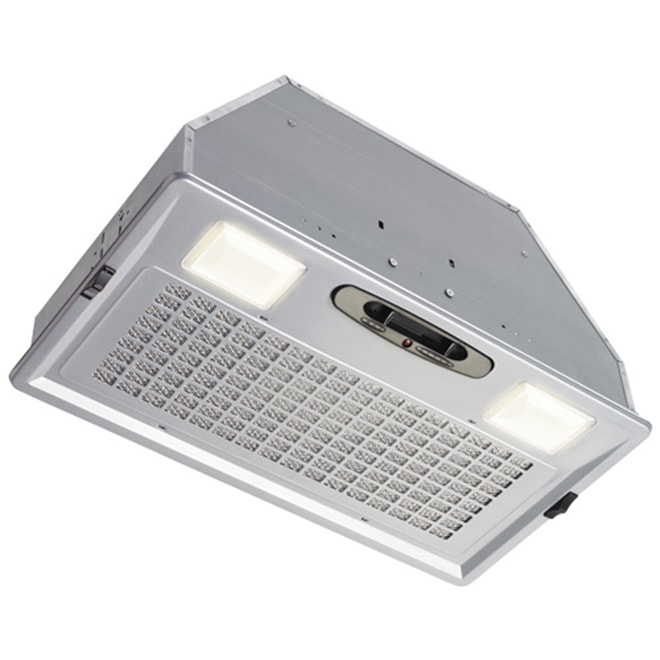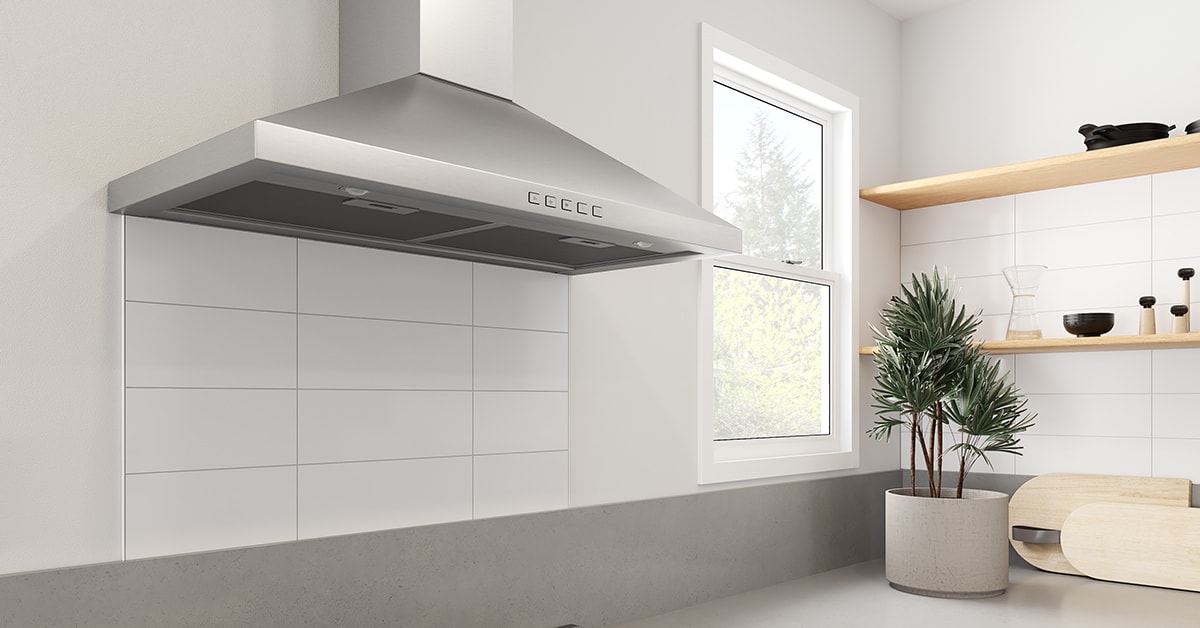Learn More About Range Hoods Before You Choose



Veuillez vous connecter à votre compte afin de profiter de vos rabais en ligne.
Se connecterPlease sign in to your account to take advantage of your online discounts.
Sign in








Motor Power
In order to choose the best range hood for your kitchen, it is best to carefully evaluate the size of the environment in which it will be installed. Range hoods are equipped with electric motors chosen according to the air movement it produces. This capacity is measured in cubic feet per minute (CFM).
This measurement only applies to exterior venting systems. When you calculate capacity, you should take kitchen volume and duct length into consideration:
Duct length | CFM Capacity |
1-15’ | Up to 270 |
16-20’ | 270-400 |
20’+ | 400 or more |
Important: If you have an open-concept kitchen, you will need to calculate the total volume.
Sizing
The width of most range hoods varies between 24"-36". The most popular are 30" models, since their width is appropriate for most electric and gas stoves. Generally, the range hood should overlap the cooking surface by 3” on both sides. This is particularly important for gas ranges.
Depth can vary slightly from one manufacturer to another and from one model to another. Hood depth should generally be calculated to overhang at least a half of the front elements.
Lighting
Most range hoods are equipped with one or more lights which provide an extra source of lighting in the kitchen. Depending on the model chosen, you may have up to 3 incandescent, fluorescent, or halogen bulbs. Many models include LED lighting, which is specially designed to sustain heat.
Fans
Fans are made of plastic or metal and are generally located in the body of the range hood, making them easier to access for cleaning and maintenance, but also noisier.
If you want to eliminate as much noise as possible, you should consider range hoods with fans placed outside the house. For this type of installation, intended solely for external venting hoods, the fan/motor casing is located either in the attic or on the roof. Although a little more complex, this type of installation is much quieter. Motors are equipped with one of 2 types of fans, either:
When noise is a prime consideration, check out models equipped with in-line fans or fans placed outside the home.
Filters
The primary role of filters is to capture grease particles before they enter the ducting. Grease represents a potential fire hazard and can also present long-term cleaning problems. Rectangular or circular, filters come in various sizes depending on the hood model. Some models use 2 filters.
Hood Body
The hood body houses the various elements included in the hood, such as the filters, fan, and motor.

Once the ventilation ducts are in place, installing the range hood is relatively simple. The height from stove varies according to the type of cooktop, suction and exhaust capacity, and the type of unit. As a general rule, the closer the hood is to the cooking surface, the more effective the suction and evacuation of foul air will be.
Lower-performing hoods should be installed 18"-24" from the cooktop.
Average-performing hoods should be installed 24"-30" from the cooktop.
Top-performing and commercial-type hoods should be positioned 30"-36" from the cooktop.
These are general guidelines and will vary according to individual manufacturers. Be sure to read the instructions carefully.
A few tips:
Whatever installation method you choose, it is generally wise to consult an electrician. If you decide to do the installation yourself and to connect the range hood to an existing electrical circuit, remember the 15-amp rule, whereby the total load on any circuit breaker may not exceed 15 amps. If the range hood’s additional amperage plus existing elements (other appliances, lights, etc.) totals more than 15 amps, you’ll need to wire it into an empty breaker slot in the main panel.
The optimum amperage (light and fan speed settings) will be indicated on a label attached to the hood. The National Building Code of Canada requires that you install a junction box at every wire junction.
Remember that all electrical installations in Quebec must be carried out by a master electrician and member of the Corporation des maîtres électriciens du Québec (CMEQ).

Before purchasing, run your hand lightly on the underside of the hood to make sure there are no rough or sharp edges that could cause injuries when you’re cleaning. Grease and soot accumulate in the filters, on the underside of the hood, and on ducts. If you let filters become obstructed, their effectiveness will be compromised.
Maintenance should be carried out as follows:
For more information on proper ventilation, see our guide 10 Tips for Ventilation and Air Conditioning.
Still having a hard time choosing? When you see a model you like, scroll down to the Reviews section. You will be able to read the comments of our other customers!

